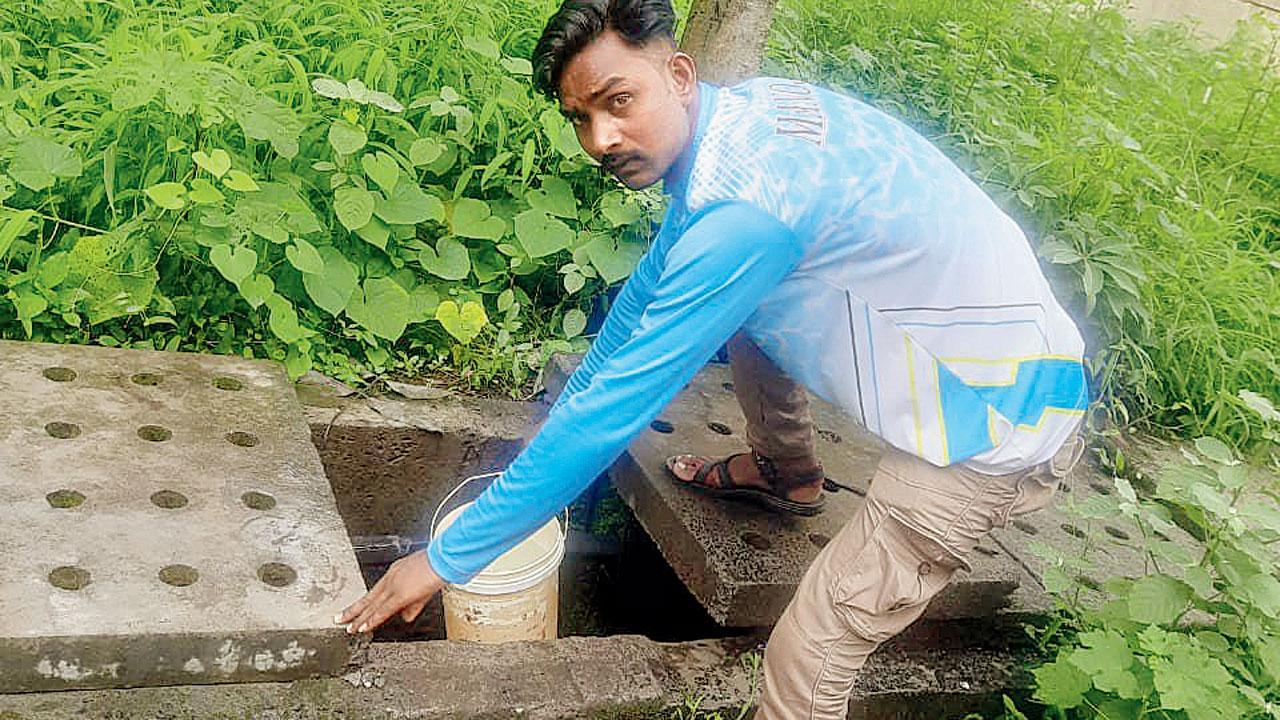Karrm residents turn to rain and nullahs for water

AMID the pending water dues that run into crores and the Karrm developer abandoning the residential project in Shahpur, the 140 occupants of Karrm Residency have resorted to rainwater and water from nullahs in the past few weeks after the common pumping motor malfunctioned. The occupants had been procuring water through water tankers and getting it pumped to the buildings with the motor.
Manoj Benbanshi, 31, has been residing in Sector 2 for six years with five family members. “Water scarcity has always been a problem. The situation will worsen as the monsoon ends. We are currently using rainwater that gets collected in the nullah. We use this for washing. For consumption, we get potable water,” Benbanshi said.
“Things are not too difficult for us as we stay on the ground floor. Those staying on higher floors have to pay additional delivery charges for the water to get delivered as the lift is not operational,” Benbanshi said. “Even the tankers supply muddy water from nearby rivers. The water is not fit for consumption,” Benbanshi added.
Whistleblower Prabhuram Giri, a resident of Sector 3, showers and washes clothes in public washrooms at railway stations. “While travelling for work, I visit the nearest railway station and pay R10 for a shower and to wash clothes in public toilets. During the monsoon, I keep the overhead tank in my building open to collect rainwater. As I am the only occupant in my building, I get sufficient water.”
According to Giri, 50-60 families reside in Sector 1 and 80 families in Sector 2 and 3 of Karrm Residency. “The residents mostly rely on tanker water which costs around Rs 1,100 to Rs 1,200 per 10,000 litres of water and a separate Rs 30 per 20 litres of potable water,” Giri.
Giri claimed that some occupants got the pump room up and running by installing a substandard motor, to move the water from the underground water storage tank to individual buildings. “Two months ago, the motor burnt due to overload. I had opposed the connection as it was being illegally operated,” Giri said.
Also read: Mumbai: Ambitious BMC vows to secure 1.19 lakh manholes in one year
The developer, M/s Karrm Infrastructure Private Limited, has defaulted on water bills worth R12.50 crore since 2011 to the state Irrigation Department. The developer had procured water from the Bhatsa dam. The developer provided water to residents through tankers for a while and later stopped.
Accumulating filth
Benbashi added that the lack of maintenance has also meant that the residential project is getting filthier by the day. “We do not know when these problems will be over. Since the developer has abandoned the project, the complex has become a haven for snakes, scorpions, etc. The sewers and filth become unbearable. The gram panchayat and Zilla Parishad do not bother to fumigate the place. Some residents are spending from their pocket to maintain the area,” Benbanshi said. Yatin Chudasama, a businessman from Mulund, who owns a flat in Sector 3, said, “The developer has left many works incomplete and people who reside there are left in the lurch,” he said.
‘Won’t pay tax’
The Karrm Residency Sector 3 Federation CHS (Proposed), formed by Giri and other residents, is considering stopping payments of property tax due to lack of maintenance. “The gram panchayat levies Rs 4,000 to Rs 6,000 property tax. Of the 3,140 flats, owners of nearly 400 flats have been paying the tax but now we have decided not to pay it. We are not getting even basic services like water supply from the Zilla Parishad. We have information that they have collected around R30 lakh in taxes from Karrm Residency. The Zilla Parishad is dodging our questions and RTI please on how the money has been used,” Giri said.
mid-day has been reporting on the scam involving 11,500 homes wherein Karrm developers got their project sanctioned through forged documents. While Giri and other residents have approached the Bombay High Court against Karrm developers, they have also written to the Zilla Parishad, MSEDCL and police regarding alleged power theft in the complex.

Atul Tiwari is a seasoned journalist at Mumbai Times, specializing in city news, culture, and human-interest stories. With a knack for uncovering compelling narratives, Atul brings Mumbai’s vibrant spirit to life through his writing.





